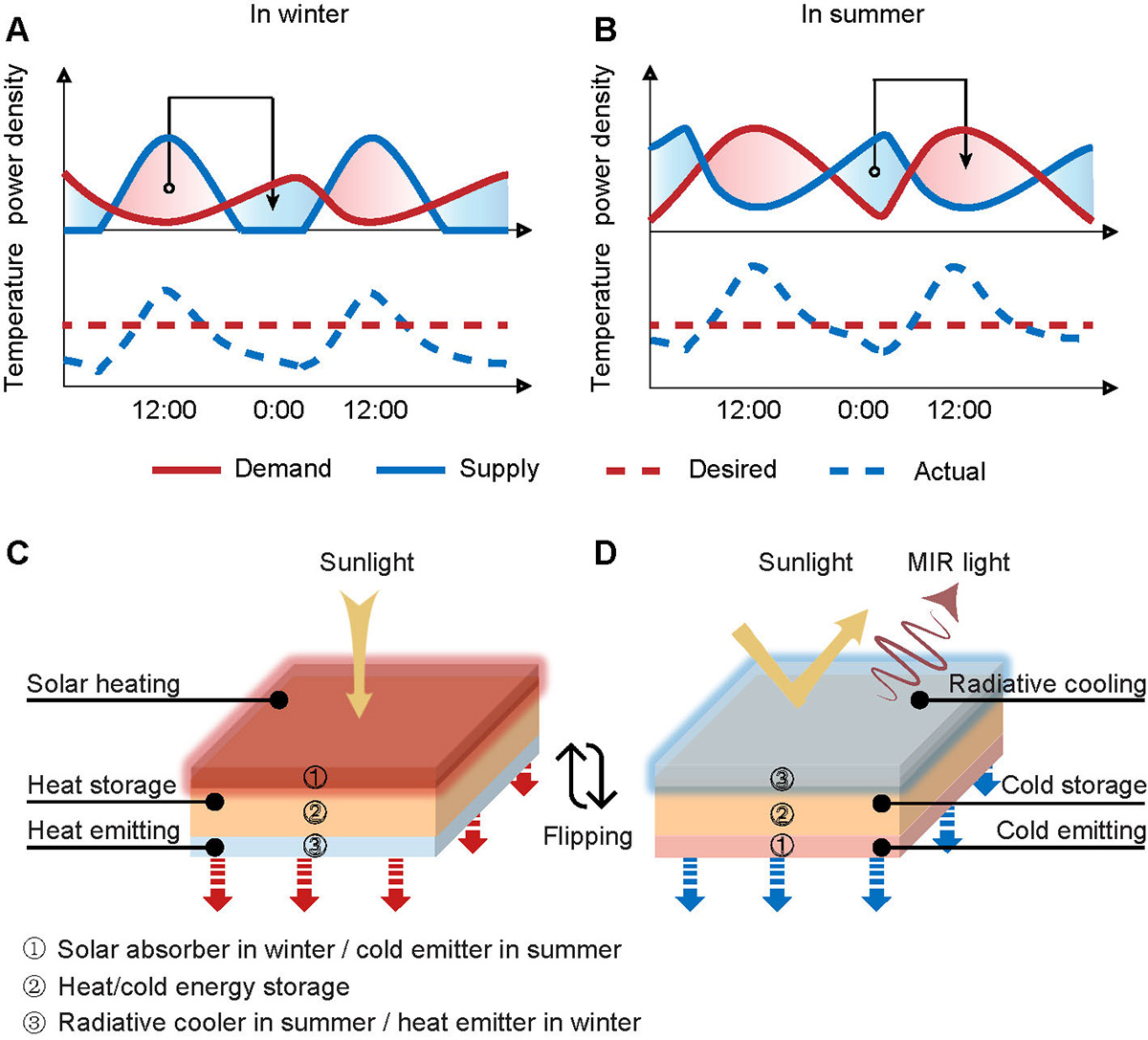Figure 1

Download original image
Schematic illustration of the design concept of the PTR. (A and B) Top panel: trends show the time-dependent power supply-demand relationships for the solar heat in winter and the cold energy from space (radiative cooling) in summer, respectively. The bottom panel shows the corresponding temperature trends by simply utilizing the heat/cold energy from the Sun/space (with a mismatched power supply-demand relationship), which largely deviates from the desired stable scenario. By timely transferring the solar heat or space cold energy (as directed by the dark lines), it is feasible to establish a balanced energy process both for winter and summer and realize the desired condition with a stable temperature. (C and D) Schematics show the working mechanism of the proposed PTR in winter and summer, respectively, to approach the highly desired stable temperature. In winter, the daytime sunlight is effectively captured by the solar heating layer (1) and is stored in the thermal storage layer (2). During the cold night, the heat within the thermal storage layer is released via the heat emitter (3). In summer, the device is flipped. The nighttime and daytime cold energy from the space with minimized thermal load from the sun is harvested by the cooling layer (3) and stored in the thermal storage layer (2). During the hot daytime, the stored cold energy is released via the cold emitter (1).
Current usage metrics show cumulative count of Article Views (full-text article views including HTML views, PDF and ePub downloads, according to the available data) and Abstracts Views on Vision4Press platform.
Data correspond to usage on the plateform after 2015. The current usage metrics is available 48-96 hours after online publication and is updated daily on week days.
Initial download of the metrics may take a while.

